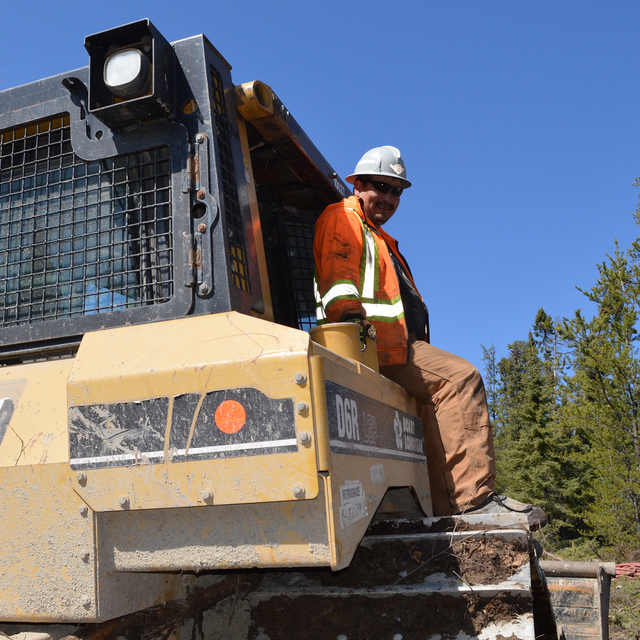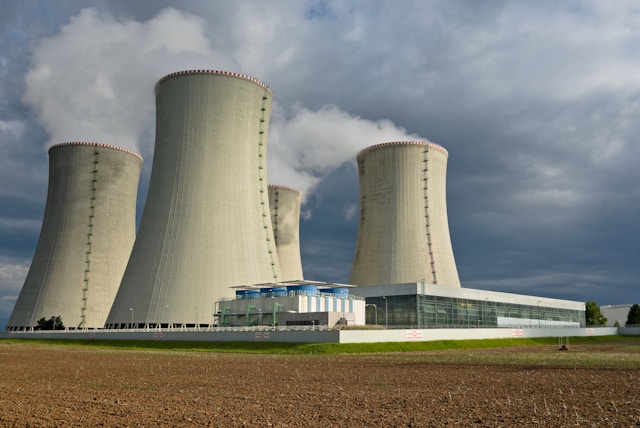Avalon Advanced Materials goes after green

Avalon employee at the spring drilling program. — photo courtesy Avalon Advanced Materials For Avalon Advanced Materials, sustainability covers a ran
Avalon employee at the spring drilling program. — photo courtesy Avalon Advanced Materials
For Avalon Advanced Materials, sustainability covers a range of topics—not just environmental stewardship. The company is doing everything it can to be sustainable throughout all aspects of its operations. Health and safety, transparency with stakeholders, aboriginal and employee engagement and encouragement are just as important as implementing environmentally friendly initiatives.
“My role is to move the company forward in all those areas,” said Mark Wiseman, vice-president of sustainability. Everyone within the company is involved in their sustainability initiatives in some way.
In terms of energy sustainability within its own practices, Avalon is doing everything it can at its Separation Rapids Lithium Project in Kenora, Ontario, to raise the bar. Broadly, Avalon uses the best technology it can, “and in some cases, we’ve come up with new technology to reduce our impact on the environment,” said Wiseman.
Lithium on its own helps sustainability movements worldwide.
“Lithium is critical for the battery market, which will be key in the world’s reduction of greenhouse gas,” Wiseman said. “Until we have adequate large-scale economic storage, we will never be able to get away from the typical 100 per cent reliable energy supplies because, unfortunately, the sun doesn’t shine and the wind doesn’t blow all the time.”
With the help of lithium batteries, the industry can rely more on renewables like wind and solar. There are two components to Avalon’s energy efforts at Separation Rapids—first, to explore green energy supply options; second, to reduce energy use, therefore minimizing greenhouse gas emissions through improvements in technology and processes.
With the Preliminary Economic Assessment of Separation Rapids complete, Avalon can dedicate attention to exploring alternative energy supplies. Avalon has already rejected the use of diesel.
“It’s probably the worst in terms of greenhouse gas production,” Wiseman said. “As a green company, it doesn’t make sense for us to use it.” The company is considering natural gas as a lower GHG substitute for diesel for part of its hydrometallurgical plant.
“We’ve tried to look at the really green energy sources,” Wiseman said. Run-of-river hydroelectric and wood waste were their first two considerations. Unfortunately, the nearby Indigenous community is not supportive of a partnership in the run-of-river hydroelectric supply at this time. And wood waste from Kenora’s forestry industry would not be a reliably consistent and clean energy supply for the burners that would be required to produce energy.
Their next step was considering solar and wind energy as at least partial supplies.
“Basically, you need to have an initial supply that will meet all the needs because you can’t rely 100 per cent on solar or wind at this stage because we don’t have the storage,” said Wiseman. “So, you need to have a fundamentally safe supply.”
The current solution for a green energy supply at Separation Rapids appears to be utilizing a nearby hydroelectric dam to bring the initial project to power through a dedicated power line that would need to be constructed. At the early stages of the project, it probably won’t be economically feasible to simultaneously construct wind and solar supplies near by. However, once the site is running and creating a cash flow, the company can begin to implement partial wind and solar supplies that will also benefit the nearby aboriginal communities into the future.
All of these sustainability solutions for Separation Rapids are still in the planning stages. Avalon is continuing to pursue more alternatives for this project, as well as others across Canada, to further reduce its greenhouse gas emissions.
“The rate of advancement in battery technology is remarkable,” Wiseman said. “Who knows, if maybe we aren’t up and running in a year or two, we might be able to go to that.”
The energy supply solutions only cover a fraction of the sustainability options Avalon is contemplating. After looking at the standard technology used in lithium plants, Avalon wanted to explore new, efficient, therefore more environmentally friendly technologies and processes. That could include creative tailings solutions, finding uses for all the byproducts that will be recovered along with lithium, or minimizing water use in processing. The goal is to reduce energy and water use in all the components of mining operations.
For example, the company is able to modify and optimize the typical lithium processing reagents, and reduce the quantities of reagent necessary. These small changes create a wave of efficiency improvements directly and indirectly throughout the mine. For instance, reducing the reagent necessary to process lithium in turn reduces the greenhouse gas emissions from the manufacturing and transporting the reagent to the project site. There is room for increased efficiency in each area of a mine.
“We also looked at ways of reducing energy in the concentrator, and we came up with a strategy that is called optical sorting. You have dark and light rocks. In our case, the dark rocks are waste, and the light rock has lithium,” said Wiseman. The rock is ground to thumbnail size, and carried on a conveyor belt past a machine that identifies light from dark rocks. The dark rocks are pushed aside by a blast of air, so they are not moved into the concentrator. “Because we have less rock going in, we need less energy to crush and grind.”
These solutions are just the tip of the effort Avalon has poured into its projects. Separation Rapids isn’t the only project that Avalon is considering sustainable solutions for: “We want to keep moving ahead to get to the greenest options possible,” Wiseman said.



